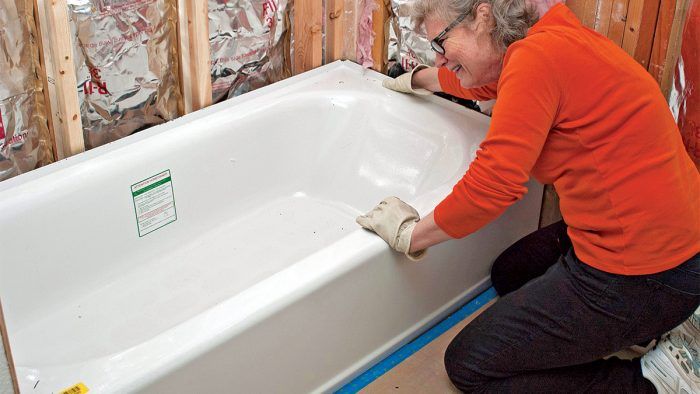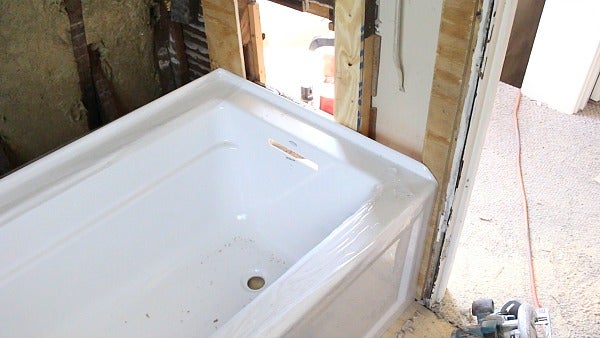Do you find yourself in search of know-how around How to Install a Bathtub: Install an Acrylic Tub and Tub Surround?

Mounting a bath tub isn't precisely rocket science, yet it does need solid plumbing, woodworking, and sometimes, tiling abilities. Replacing an old bathtub with a brand-new one is likewise a moderately hard job. If the old tub is conveniently easily accessible, the project can relocate rapidly; if you have to open up a wall to get rid of the old tub and place the new bath tub, the task is much harder. In either instance, the project is within a house handyman's skills, although you will certainly need an assistant to leave the old tub as well as set in the brand-new one. Ensure you have actually qualified yourself for the task and also are comfortable trying it. Instead of working with a specialist to take over a halfway-completed task, it is better to take into consideration employing one prior to you begin. Possibilities are you may need an expert plumber to make tube links.
This short article will certainly assist you mount a new bath tub in your bathroom if you have currently purchased a brand-new tub as well as do not need to transform the arrangement of your previous water system pipes.
Your tools and also material list should consist of the following:
Removing Old Touches
If you require to replace old taps with brand-new ones as a part of your installation, then the first thing you need to do is disconnect the water supply. After doing so, switch on the faucets to drain any water staying in the system. The procedure of removing the existing taps can be fairly problematic because of the restricted gain access to that is commonly the case.
Use a basin wrench (crowsfoot spanner) or a faucet device to undo the nut that connects the supply pipelines to the faucets. Have a towel ready for the staying water that will certainly originate from the pipelines. Once the supply pipelines have been removed, utilize the exact same device to loosen up the nut that holds the faucets onto the bath/basin. You will need to stop the single taps from turning during this procedure. As soon as the faucets have actually been removed, the holes in the bath/basin will have to be cleaned up of any type of old securing substance.
Prior to proceeding to fit the new taps, compare the pipe connections on the old taps to the new faucets. If the old faucets are longer than the brand-new faucets, after that a shank adapter is needed for the new taps to fit.
Suitable New Touches
If the tails of the brand-new faucets are plastic, then you will need a plastic connector to prevent damages to the string. One end of the adapter fits on the plastic tail of the faucet as well as the other end offers a link to the existing supply pipes.
If you require to fit a monobloc, after that you will certainly call for minimizing couplers, which attaches the 10mm pipeline of the monobloc to the common 15mm supply pipeline.
Next off, place the tap in the placing opening in the bath/basin making certain that the washing machines remain in area in between the tap as well as the sink. Protect the tap in place with the maker offered backnut. When the tap is securely in position, the supply pipelines can be connected to the tails of the taps. The taps can either be connected by using corrugated copper piping or with regular faucet ports. The former type should be attached to the faucet ends first, tightening up just by hand. The supply pipes can later be connected to the various other end. Tighten both ends with a spanner after both ends have been linked.
Setting up the Bathtub
Making use of both wooden boards under its feet, place the bathtub in the required setting. The wooden boards are practical in uniformly spreading the weight of the tub over the area of the boards as opposed to focusing all the weight onto four tiny points.
The next objective is to make sure that the bathtub is leveled all round. This can be attained by inspecting the level as well as changing the feet on the bathtub till the spirit level reviews level.
To mount taps, fit all-time low of the furthest adaptable tap adapter to the suitable supply pipeline by making a compression join; after that do the exact same for the various other tap.
Activate the supply of water and also inspect all joints and also brand-new pipework for leaks and also tighten them if required. Load the bathtub as well as likewise check the overflow outlet and also the typical electrical outlet for leaks.
Lastly, fix the bath paneling as defined in the producer's user's manual. Tiling and sealing around the bath tub should wait up until the bath tub has been made use of at least once as this will certainly settle it right into its final setting.
Planning for the Installation
First of all, the sustaining frame supplied with the bathroom needs to be fitted (if required) according to the maker's guidelines. Next, fit the taps or mixer to the tub. When suitable the tap block, it is very important to see to it that if the tap includes a plastic washer, it is fitted in between the bathroom and the taps. On a plastic bathroom, it is additionally reasonable to fit a supporting plate under the faucets unit to avoid stress on the bath tub.
Fit the adaptable tap connectors to the bottom of both taps using 2 nuts as well as olives (often provided with the bathtub). Fit the plug-hole outlet by smearing mastic filler round the sink outlet hole, and after that pass the outlet with the hole in the bathroom. Make use of the nut provided by the manufacturer to fit the plug-hole. Examine the plug-hole outlet for an inlet on the side for the overflow pipe.
Next, fit completion of the versatile overflow pipeline to the overflow electrical outlet. After that, screw the pipe to the overflow face which ought to be fitted inside the bath. Make sure you use all of the provided washers.
Link the trap to the bottom of the waste electrical outlet on the bath tub by winding the string of the waste outlet with silicone mastic or PTFE tape, and screw on the trap to the outlet. Link all-time low of the overflow tube in a comparable manner.The bathroom need to now be ready to be fitted in its final setting.
Tiling Around the Tub
In the location where the bathroom fulfills the floor tile, it is needed to secure the accompanies a silicone rubber caulking. This is necessary as the installation can relocate sufficient to fracture a stiff seal, triggering the water to permeate the wall surface in between the bathroom as well as the tiling, causing issues with wetness and also feasible leaks to the ceiling below.
You can choose from a selection of coloured sealers to assimilate your fixtures and fittings. They are marketed in tubes and also cartridges, as well as are capable of securing spaces as much as a width of 3mm (1/8 inch). If you have a bigger space to fill, you can fill it with spins of drenched newspaper or soft rope. Remember to constantly load the tub with water before securing, to permit the motion experienced when the tub remains in use. The sealant can fracture relatively early if you do not consider this movement prior to sealing.
Alternatively, ceramic coving or quadrant floor tiles can be utilized to border the bathroom or shower tray. Plastic strips of coving, which are easy to use as well as reduce to size, are additionally quickly available on the marketplace. It is a good idea to fit the ceramic tiles using waterproof or water resistant glue as well as grout.
Bathtub Installation
How Important Is A Bathtub To Your Home?
High-quality baths, showers, and other bathroom updates are necessary when considering a smart investment in your home. It’s a room that you go to every day and one that is constantly being used by guests.The bathroom is one of the top trafficked rooms in a home and also one of the most valuable in terms of home resale.
Install Piping Before Tub
You will be using your existing drain and waste vent system, but pipes required include the hot and cold water supply lines and a pipe leading to a shower head. A mixing valve and shower head are also needed. Air chambers may be required.
Position the Tub
Lower the tub into place so that the continuous flange fits against the wall studs and rests on 1’x4' or 2’x4' supports. Anchor the tub to the enclosure with nails or screws inserted through the flanges into the studs.
NOTE: Remember, bathtubs and shower stalls may require support framing. A bathtub filled with water is extremely heavy, so check building codes and framing support before installing the tub.
Assemble Drain Connections
Assemble the bathtub drain connections by connecting the tub overflow with the tub drain above the trap, not beyond it. The trap will have a compression fitting that screws over the arm of the overflow assembly.
Place a Pipe For the Shower Head
First, locate a brass female threaded winged fitting and attach it to a framing support via a screw or a nail. Then run a pipe up the wall for the shower head. Sweat or solder the other side of the brass fitting to the top of the pipe.
Attaching Hot and Cold Water Lines
Attach your water lines for both hot and cold by sweating these directly into the hot and cold ports of the mixing valve. The mixing valve will be how water enters the tub’s system, not by the pipes themselves.
Install the Spout
Extend a piece of 1/2 inch pipe, or whichever length is specified in the manufacturer’s instructions, for the tub spout. Sweat on a male threaded fitting at the end of the pipe or use a brass nipple of the proper length and a 1/2 inch cap.
NOTE: At this point you should have your rough-in plumbing work inspected before proceeding further.
Check For Leaks
Restore the water pressure and check the drain connection and the supply pipes for any sign of leaking.
estore the Bathroom Wall
Replace the wall with moisture-resistant drywall as a base for your wall covering. Seal the joints between the wall and your new tub with silicone caulk as protection against water seepage.
https://www.berkeys.com/2016/12/02/bathtub-installation-dallas/

I stumbled upon that piece of writing on How to Install a Bathtub: Install an Acrylic Tub and Tub Surround while scouting around the internet. Are you aware of somebody who is fascinated about the subject? Feel free to share it. We thank you for reading our article about How to Install a Bathtub.
Book Your Service